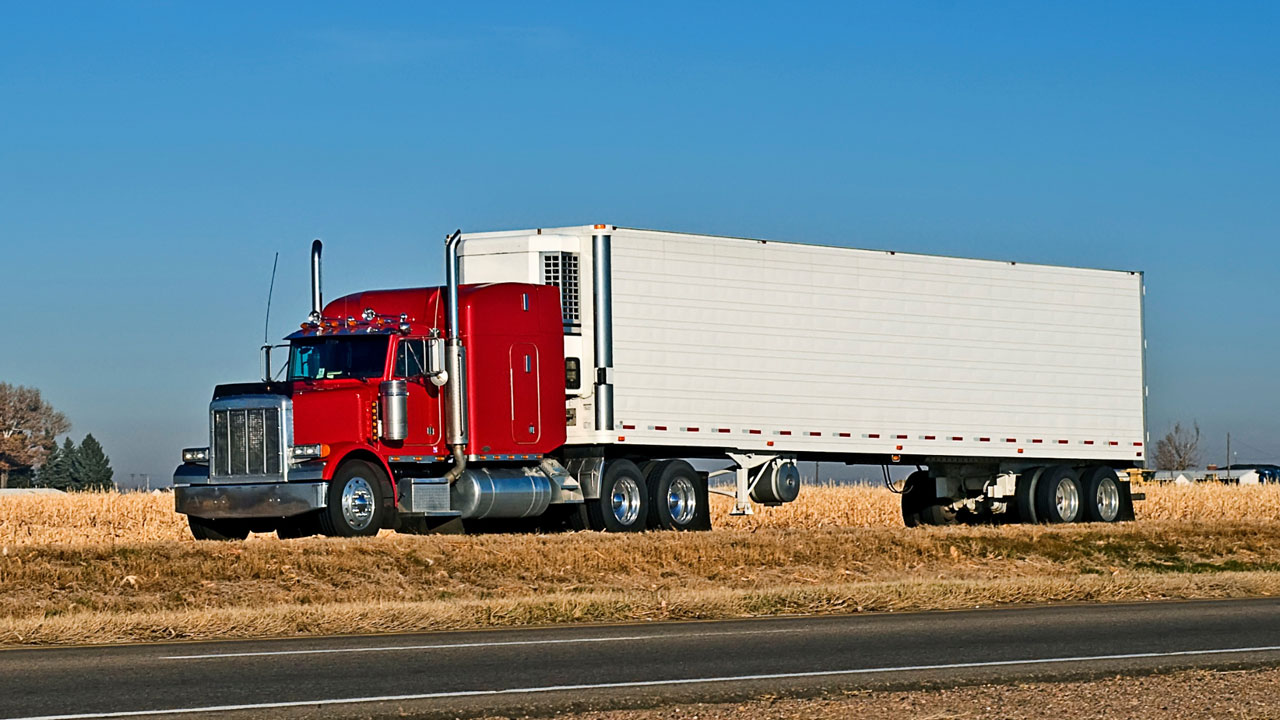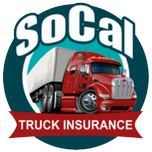
Factors Affecting Big Rig Insurance Rates In California
In the bustling state of California, the trucking industry plays a pivotal role in the economy, transporting goods across the state and beyond. For trucking companies and owner-operators, securing big rig insurance is not just a regulatory requirement; it’s a crucial safety net.
Commercial truck insurance in California, however, presents a wide range of rates and necessitates a comprehensive coverageProtects against damages to a truck from non-collision-related incidents such as theft, fire, vandal... plan to mitigate potential financial risks.
This blog dives deep into the myriad factors influencing big rig insurance rates in California. We will discuss the intricacies of coverage types, regulatory requirements, personal variables of driving records and vehicle specifications.
The Importance Of Big Rig Insurance
Operating a big rig comes with significant financial risks, from accidents on the congested highways of California to unforeseen events that could disrupt operations. Big rig insurance serves as a protective barrier, safeguarding trucking businesses and their assets against such uncertainties. This coverage is essential not only for complying with legal requirements but also for ensuring the continuity of business operations in the aftermath of an incident.
Insurance mitigates financial risks in several ways. In the event of an accident, for example, liabilityA financial obligation or debt owed by an individual or business to another entity, typically result... coverage takes care of damages caused to others, while physical damage insurance covers the repairs to the truck itself. This comprehensive protection allows businesses to recover more swiftly, minimizing downtime and financial losses.
Types Of Coverage For Big Rig Insurance
Getting big rig insurance can be complex, with various coverage options available to address different aspects of trucking operations. Here’s a breakdown of the critical types of coverage:
- Primary Liability InsuranceThe main auto liability coverage that protects against injuries or damage to other people or propert...: Mandatory by law, it covers damages your truck might cause to other parties in an accident.
- Physical Damage Insurance: This covers repair or replacement costs for your truck if it’s damaged in an accident, stolen, or vandalized.
- Cargo InsuranceInsurance that covers loss or damage to freight during transit, which is critical for motor carriers...: Protects the goods being transported, offering compensation for cargo loss or damage.
- Non-Trucking Liability InsuranceCoverage that protects against claims resulting from injuries and damage to people and/or property.: Also known as bobtail insuranceSpecifically covers the liability of a truck when it is driven without a trailer, typically after de..., it provides coverage when the truck is used for non-business purposes.
- Motor Truck Cargo InsuranceInsurance that covers the transporter for their responsibility in the event of damaged or lost freig...: Tailored for the trucking industry, this insurance covers the cargo against damages or losses during transit.
Factors Affecting Big Rig Insurance Rates
Specific coverage requirements for California commercial truck insurance vary depending on the type of freight hauled and whether the trucking operations cross state lines. For example, transporting general freight within the state requires a minimum of $750,000 in liability insurance, while hauling hazardous materials may necessitate up to $5,000,000 in coverage. These mandates ensure that all trucking operations maintain adequate protection against liabilities and losses, reflecting the diverse needs and risks of the industry.
- Driving Records and Experience: Insurance companies heavily weigh the driving records of operators. A history of safe driving often results in lower premiums. Conversely, a record tarnished with violations or accidents signals higher risk to insurers, leading to increased rates. Experience also plays a pivotal role; seasoned drivers typically enjoy lower rates compared to their less experienced counterparts, as they’re perceived to pose less risk.
- Vehicle Types and Business Activities: The specific truck in operation significantly impacts insurance rates. This includes the vehicle’s size, age, and overall condition. The nature of the truck’s use, such as the types of goods transported and the operational radius, also influences premiums. For instance, transporting hazardous materials or operating in urban areas may lead to higher insurance costs due to the increased risk factors involved.
- Coverage Limits and Claims HistoryA record of all past claims that have been made by an insured, used by insurers to assess risk and d...: Selecting higher coverage limits offers more protection but also increases the insurance cost. A history of frequent insurance claims can also raise premiums, as it indicates a higher risk of future claims.
- Market ValueThe current value of a vehicle in the open market, which may differ from the actual cash value or re..., Location, and Credit History: The truck’s market value affects premiums, with higher-value trucks typically costing more to insure. Geographic location plays a role as well, with areas prone to accidents or thefts seeing higher rates. Additionally, a trucking business’s credit history can influence insurance costs, with better credit scores often leading to more favorable rates.
Additional Factors To Consider
- Occupational Accident Coverage: While not directly influencing insurance rates, occupational accident coverage acts as a supplement to worker’s compensation, providing long-term disability and accidental death or dismemberment payments. This is an important consideration for trucking businesses looking to fully protect their employees and potentially mitigate future insurance costs.
- Insurance Classification of Truckers: Insurers use various coding systems to classify trucking businesses, affecting insurance rates. Improper classification, such as being coded as a hazmatHazardous materials as classified by the government. Freight brokers dealing with hazmat shipments m... carrierThe entity that physically transports the freight from one location to another, hired by a freight b... when not necessary, can lead to unnecessarily high premiums.
Strategies To Lower Big Rig Insurance Rates
- Pay in Yearly Installments: Opting for annual payments can lead to significant savings compared to monthly payments.
- Inquire About DiscountsReductions in insurance premiums offered by insurers to policyholders who meet certain criteria that...: Many insurance providers offer a range of discounts. It’s beneficial to ask about available discounts, such as those for safe driving or bundling coverages.
- Opt for a Higher Deductible: A higher deductible can lower annual premiums, although it means paying more out-of-pocket in the event of a claimA formal request by a policyholder to an insurance company for coverage or compensation for a covere....
- Choose a Lower Limit: While ensuring compliance with legal requirements, selecting a lower coverage limitThe maximum amount an insurer will pay under a policy for a covered loss. can reduce costs.
- Shop Around: Comparing quotes from multiple insurers can uncover the most competitive rates for the specific risks and needs of your operation.
Cost Considerations For Big Rig Insurance In California
Insurance costs for big rigs in California can vary significantly based on various factors, including the type of coverage, the trucker’s experience, and the specifics of the trucking operation. For owner-operators, typical insurance rates encompass a variety of coverages like primary liability, general liability, physical damage, and more, potentially costing between $7,000 and $16,000 annually.
Notably, new authorities often face higher premiums in their initial year, ranging between $12,000 and $16,000, which may decrease in subsequent years to between $9,000 and $12,000, depending on various circumstances such as the truck’s market value, the driver’s record, and the operation’s scope.
Given the state’s rigorous regulations, ensuring compliance with both state and federal insurance requirementsStipulations within a lease agreement detailing the types and levels of insurance the lease operator... is crucial for all trucking operations. This includes not only primary liability but also cargo insurance, with specific limits based on the freight type and operational scale. The costs can also vary significantly depending on the cargo being hauled, with higher risk cargoes necessitating higher coverage levels.
How To Save On Big Rig Insurance Rates
To manage and potentially reduce these costs, consider several strategies:
- Paying in Yearly Installments: Annual payment plans can offer significant savings compared to monthly payments, potentially saving about 25%.
- Seeking Discounts: Engaging with insurance agents to uncover discounts for which you may be eligible, such as safe driver or bundled coverage discounts, can lead to cost reductions.
- Opting for Higher DeductiblesA specified amount of money that the insured must pay before an insurance company will pay a claim.: Choosing a higher deductible can lower annual premiums, though it means higher out-of-pocket costs in the event of a claim.
- Selecting Lower Coverage Limits: While ensuring adherence to state and federal regulations, opting for lower coverage limits where feasible can reduce premiums.
- Shopping Around: Comparing quotes from multiple insurers is crucial, as insurance companies vary widely in how they price their policies based on risk, location, and other factors.
Manage Your Big Rig Insurance In California With SoCal Truck Insurance
Understanding and managing big rig insurance in California hinges on a multifaceted array of elements from driving records and vehicle specifications to the types of coverage needed and business activities. For owner-operators, annual premiums can vary significantly, emphasizing the importance of adopting strategies like comparing quotes and adjusting deductibles to align coverage with budgetary requirements.
To navigate this complex landscape effectively, leveraging the expertise of specialized insurance agents in California is crucial. They can offer personalized advice tailored to your unique needs, ensuring you get the most comprehensive commercial truck insurance without overspending.
Ready to secure the right insurance for your big rig? Reach out to SoCal Truck Insurance today and set the course for a protected, compliant, and financially savvy trucking operation in California.


